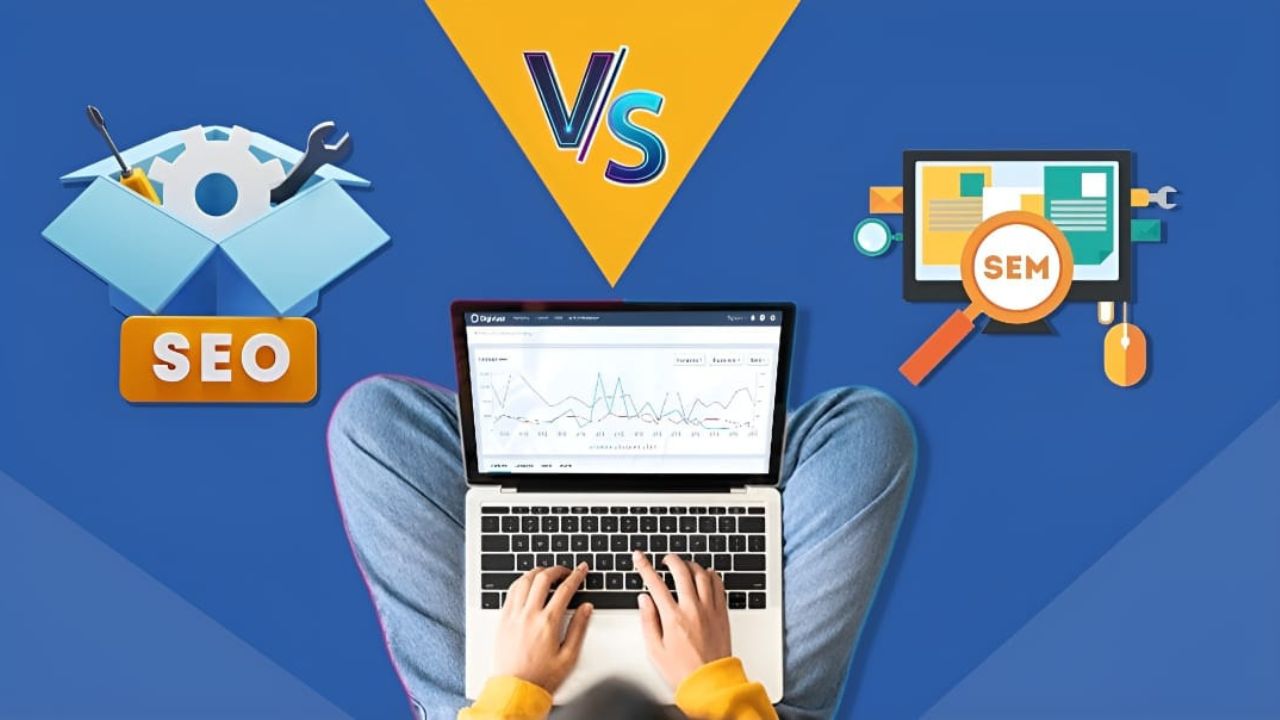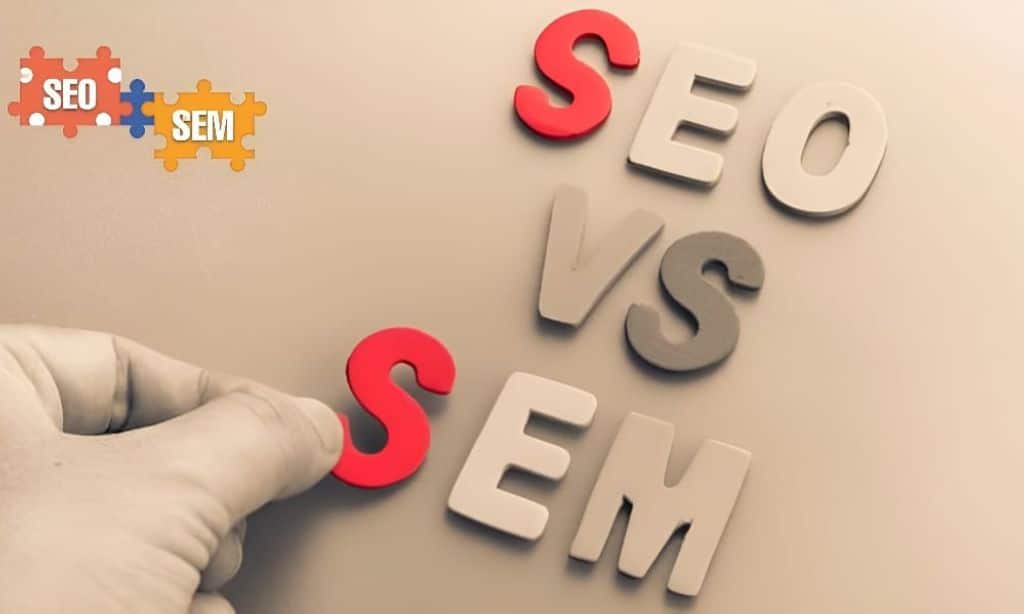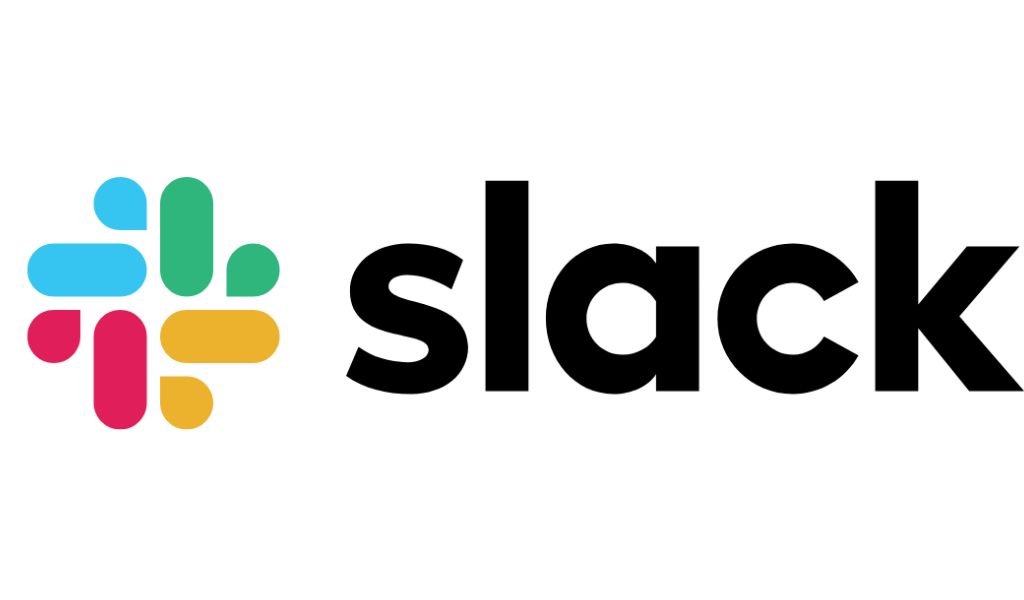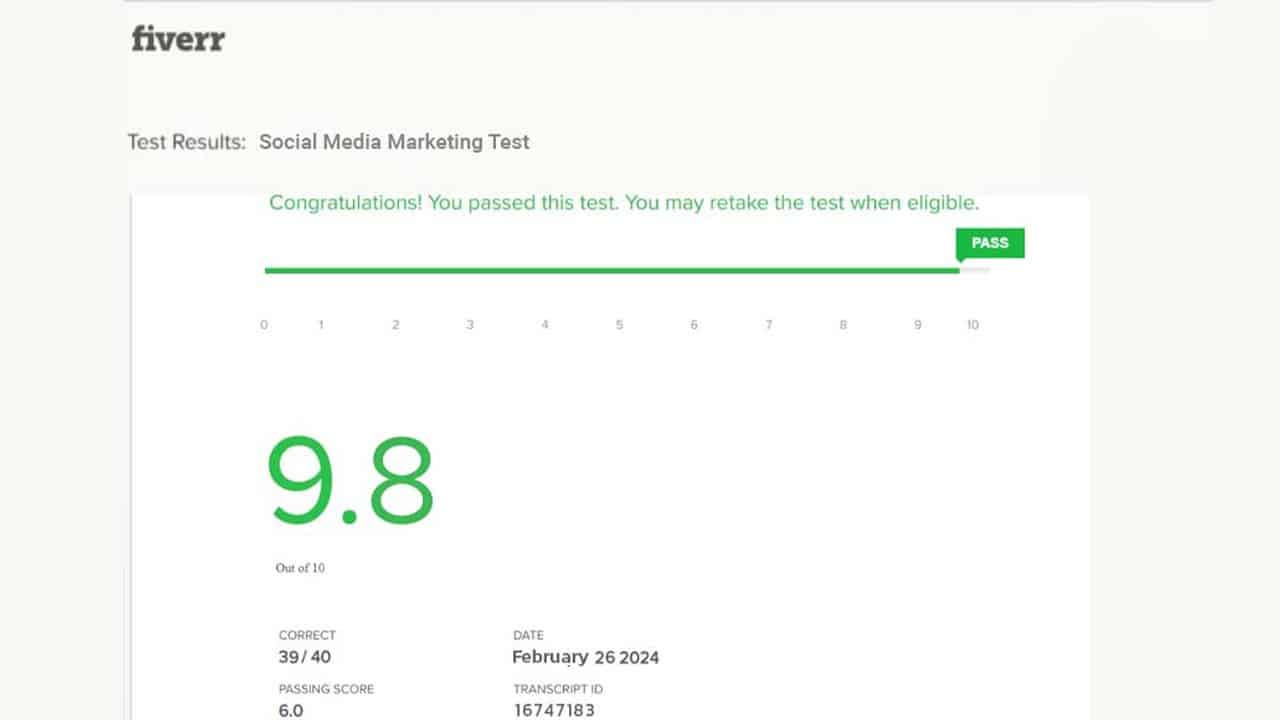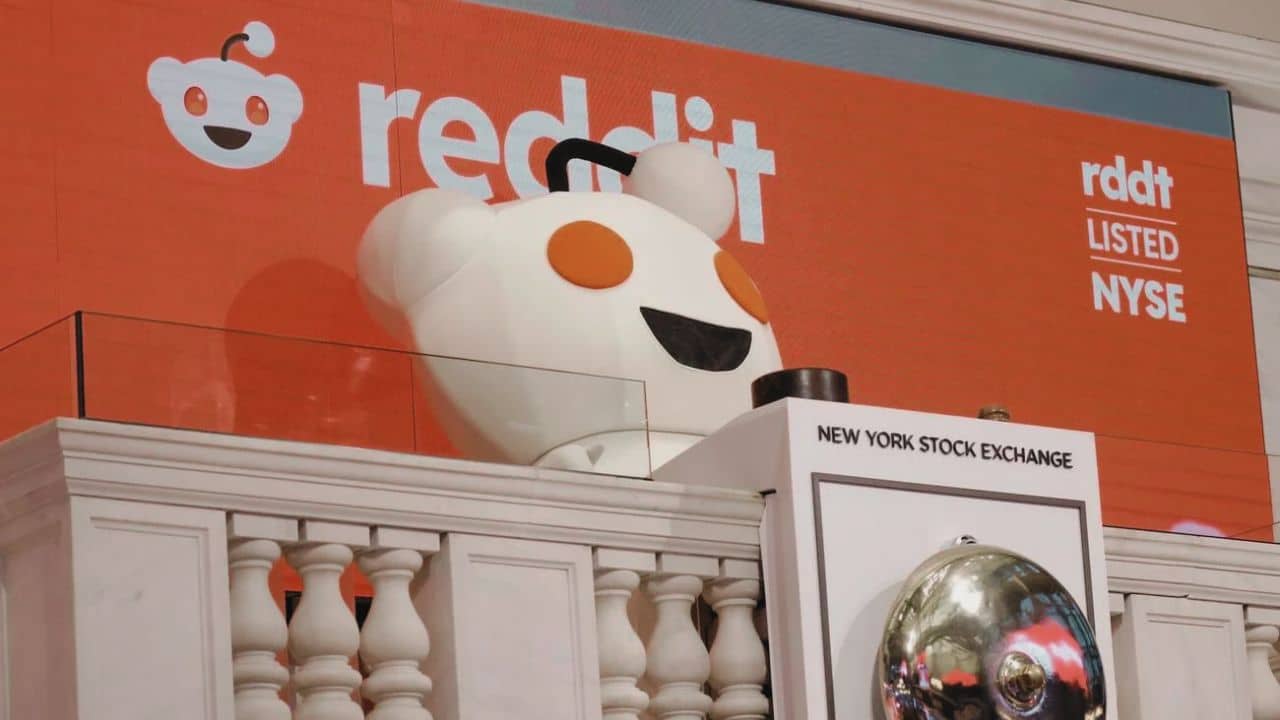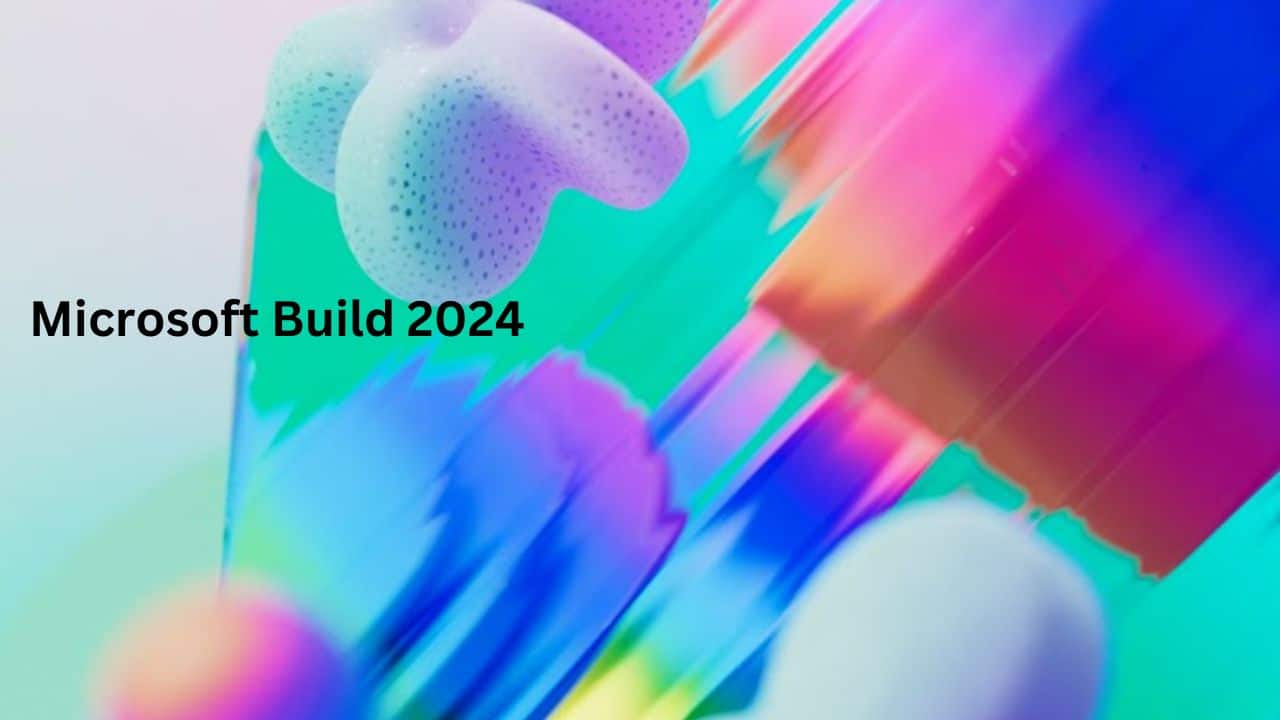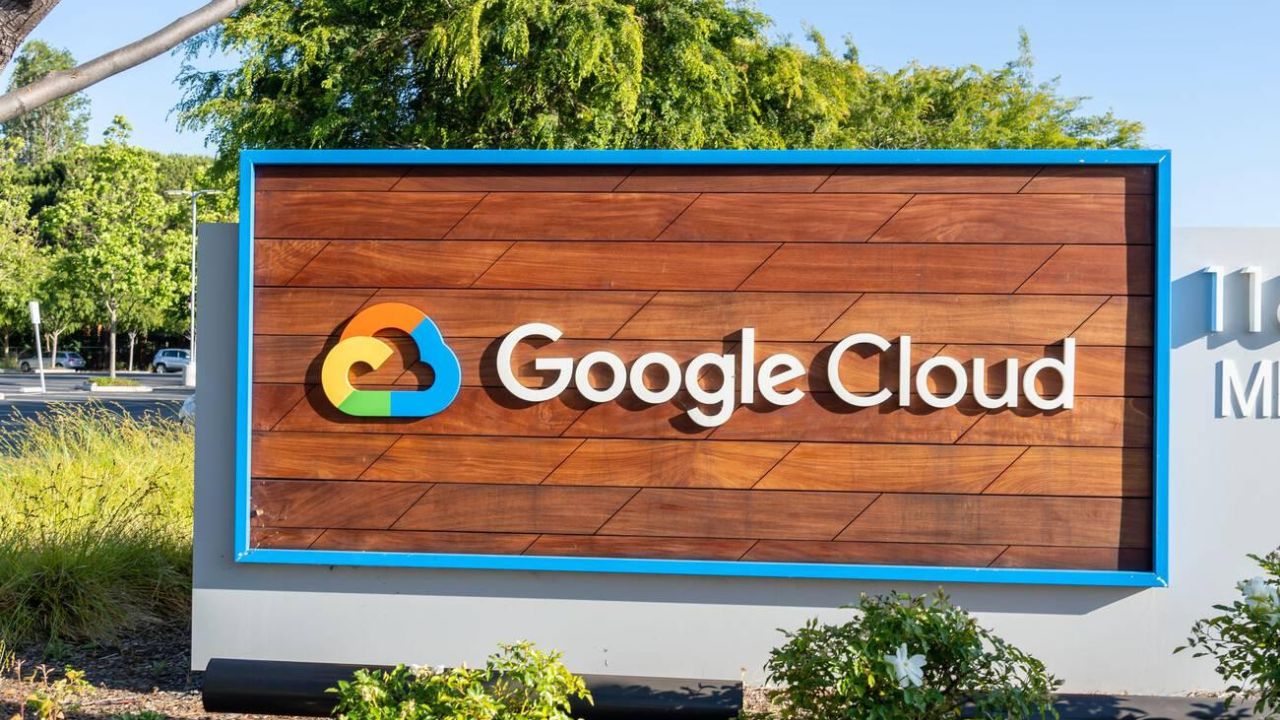In today’s digital age, standing out in the vast sea of online content can be a daunting challenge. Are you struggling to understand how to improve your website’s visibility and wondering whether SEO vs SEM could be the answer? Your quest for a heightened online presence is shared by many, but the path forward may seem shrouded in technical jargon and complex strategies.
Here’s a fact that might surprise you: despite their differences, both SEO (Search Engine Optimization) and SEM (Search Engine Marketing) share a common goal of driving traffic to your site.
The difference lies in how they achieve this – one through organic growth and the other through paid avenues. This article will untangle these strategies, offering clear insights into what sets them apart and providing direction on which approach, or combination thereof, could best propel your business forward in 2024.
Stay tuned as we delve deep into the world of search engine tactics without overwhelming you with tech speak. Ready to boost your site’s visibility? Let’s dive in!
- SEO makes your website show up in Google without paying for clicks. It’s like planting seeds that grow over time, bringing more visitors to your site naturally.
- SEM is about paying for ads on search engines so people see your business right away. You choose keywords and pay each time someone clicks on your ad.
- SEO takes time to work, sometimes months or even years. But SEM can get you seen quickly because you’re buying space on search pages.
- With SEO, you don’t pay for every click but there’s still a cost in making good content and a fast website. For SEM, you set aside money for ads and decide how much each click is worth.
- Combining SEO with SEM can be smart because it means using both freeways and paid ways to get seen online. Together they help bring more people to your website.
The Definitions of SEO and SEM
SEO, or search engine optimization, focuses on improving a website’s visibility in organic search results. On the other hand, SEM, or search engine marketing, involves generating paid traffic through tactics like pay-per-click (PPC) advertising.
SEO Focuses on Organic Search Results
Getting your website to show up in Google without paying for each click is what SEO, or search engine optimization, does. It’s all about making your site the best it can be for people and for Google’s rules.
Think of SEO like growing a garden; you plant seeds (keywords), water them (create content), and wait for them to grow (get higher on the search page). When done right, SEO brings more folks to see your site when they type in words related to what you offer.
With SEO, you make sure everything on your webpage is top-notch – from the words you write to how fast it loads. You do things like use keywords that tell people what your site is about and fix any problems that might keep Google from seeing it clearly.
It takes time, but as more people come to visit and stay awhile because they find helpful stuff, Google starts thinking your page is important and puts it higher where everyone can see it. Additionally, you can also read on local SEO vs international SEO.
SEM Generates Paid Traffic
While SEO brings in visitors over time by earning a spot in natural search results, SEM plays a different game. It involves paying for space on search engine pages to get seen right away.
This means when someone searches for something that matches your ad, it pops up at the top or bottom of the page where people can easily find it.
With SEM, you can start getting clicks and visits to your site as soon as your campaign is live because you’re paying for these spots. You pick certain words or phrases, known as keywords, and set how much you want to pay each time someone clicks on your ad—this is called pay-per-click (PPC).
You also decide who sees your ads by choosing things like location and what they are interested in. This helps make sure the right people see your ads which can lead to better chances of them clicking and becoming customers.
Differences Between SEO vs SEM
[Video Credits @Ahrefs]
SEO and SEM differ in their approach to targeting audiences, time to see results, cost structure, control factors, result volatility, conversion rates, and the integration of both strategies for maximum impact.
| Feature | SEO | SEM |
|---|---|---|
| Target Audience | Organic search for industry. | Paid ads targeting specific demographics. |
| Time to Results | 3 months to 2 years for rankings. | Immediate visibility through paid ads. |
| Cost Structure | Content creation and optimization. | Budget for bids and running paid ads. |
| Control Factors | Influences site factors. | Direct control over ad placements. |
| Result Volatility | Results fluctuate but stabilize. | Less affected by algorithm changes. |
| Conversion Approach | Aims for long-term sustainable traffic. | Geared for immediate conversions with ads. |
| Integration Benefits | Builds authority over time. | Balances immediate impact with long-term growth. |
| Integration Strategy | Comprehensive digital marketing. | Maximizes online presence with both strategies. |
Target Audience
SEO helps your website show up when people search for what you offer. It’s good for reaching folks interested in your industry or location. You don’t pick exactly who sees your site, but the right words can attract more visitors.
SEM is different because you pay to show ads to certain kinds of people. You can choose their age, interests, and even where they live. This way, your ads are shown directly to those you think will want what you have.
If lots of businesses want the same audience, it might cost more to reach them with SEM than with SEO.
Time to See Results
Understanding the time it takes to see results is crucial when deciding between SEO and SEM. Unlike SEM, where you can expect quicker results due to paid traffic, SEO requires patience as it focuses on improving organic search rankings.
It may take three months to two years for significant ranking improvements with SEO, while SEM can deliver immediate visibility through paid advertisements.
When comparing the two strategies, considering your timeline for results is essential. While SEM offers instant visibility, investing in SEO can lead to sustainable long-term benefits.
Cost Structure
SEO and SEM have different cost structures due to their focus on organic and paid traffic, respectively. With SEO, the main investment lies in creating high-quality content and optimizing your website for search engines.
On the other hand, SEM incorporates both organic and paid results through PPC advertising, which requires a budget for setting bids and running ads. Since SEM allows hyper-targeting of demographics with paid advertising, it impacts the cost structure significantly.
Understanding these differences is crucial in choosing the right strategy that aligns with your goals and budget. The upfront investment costs for SEO and SEM play a pivotal role in making this decision.
Control Factors
In SEO, you have control over optimizing your website for search engines. You can influence factors like content quality, keyword usage, and site structure. However, search engines ultimately decide how to rank your website based on their algorithms.
In SEM, you have more direct control over when and where your ads appear. You can set parameters such as targeting specific audiences, choosing ad placements, and setting budgets. This allows for more precise adjustments to optimize campaign performance.
Result Volatility
SEO results can fluctuate due to changes in search engine algorithms and competitors’ strategies. Google frequently updates its ranking algorithms, causing shifts in website positions.
However, once a webpage gains authority and relevance, its position tends to be more stable over time.
SEM results are less affected by algorithm changes because paid ads appear at the top of the search results page. Advertisers have control over when and where their ads are displayed, reducing volatility.
However, factors such as bidding wars among competitors can also influence ad placements.
Conversion Differences
SEO focuses on driving organic traffic to a website, aiming for long-term sustainable results. On the other hand, SEM generates paid traffic and is geared towards immediate conversions through targeted ads.
The fundamental difference lies in the approach – SEO requires time to build authority and trust with search engines, while SEM provides instant visibility but at a cost. Understanding these differences is crucial in deciding which strategy aligns best with your business goals and budget allocation.
By integrating both strategies strategically, businesses can benefit from both long-term growth through SEO and immediate impact through SEM. This combination can create a comprehensive digital marketing approach that maximizes visibility, traffic, and conversions.
Integrating SEO & SEM
When businesses integrate SEO and SEM, they can expand their reach and achieve marketing goals more effectively. By combining organic search strategies with paid advertising, companies can maximize their online presence and attract a wider audience.
This integration allows for a comprehensive approach to digital marketing, ensuring that businesses capture both the long-term benefits of SEO and the immediate impact of SEM. Through this synergy, businesses can enhance their visibility across search engines, drive targeted traffic to their websites, and ultimately improve conversion rates.
Incorporating both SEO and SEM tactics enables businesses to leverage the strengths of each strategy while mitigating their individual limitations. By strategically integrating these approaches, companies can create a holistic digital marketing plan that optimizes resources for sustained growth in 2024 and beyond.
Similarities Between SEO and SEM
Both SEO and SEM aim to increase visibility and use keyword research to reach their target audience, leading to an improved online presence. Curious about how these strategies can work together? Keep reading for more insights on SEO vs SEM!
Both aim to Increase Visibility
SEO and SEM are both geared towards increasing a website’s visibility in search engine results. They work to attract more visitors and potential customers by ensuring that the website appears prominently on search engine results pages (SERPs).
Whether through organic methods like SEO or paid strategies like SEM, the ultimate goal remains the same: driving traffic to the website.
Both SEO and SEM aim to enhance a website’s presence on search engines, such as Google, which can lead to increased web traffic and improved visibility among potential customers.
Use Keyword Research
When optimizing your website for search engines, keyword research plays a crucial role. By identifying relevant keywords that your target audience is searching for, you can tailor your content to attract the right visitors.
This involves understanding the search intent behind specific keywords and selecting those that align with your business goals. Keyword research not only helps in gaining visibility but also guides your overall content strategy, ensuring that the topics you cover resonate with potential customers.
Understanding the importance of keyword research will allow you to create content that appeals directly to your desired audience. It lays the foundation for successful SEO and SEM strategies, helping you connect with potential customers when they are actively seeking information or solutions related to your offerings.
Involve On-Page and Off-Page Strategies
SEO campaigns involve on-page and off-page strategies to boost website visibility. On-page strategies focus on optimizing individual web pages through keyword research, content creation, and technical SEO to enhance the site’s relevance.
Off-page strategies work beyond the website, focusing on link building and social media marketing to build the site’s authority and reputation across the web. Both on-page and off-page tactics are crucial for improving website rankings and attracting organic traffic from search engines.
Additionally, these strategies contribute to enhancing user experience by providing valuable content while increasing a website’s credibility in the eyes of both users and search engines.
The Four Core Pillars of SEO
1. Keyword research is essential in identifying the terms and phrases your target audience uses to find products or services.
2. On-page SEO involves optimizing individual web pages to rank higher and earn more relevant traffic in search engines.
3. Off-page SEO focuses on improving a website’s reputation and authority by acquiring links from other reputable websites.
4. Technical SEO ensures that search engine crawlers can easily access, crawl, and index your website without any issues.
Keyword Research
Keyword research is a crucial step in both SEO and SEM. It involves identifying the specific words and phrases that people use when searching online. Understanding these keywords allows businesses to optimize their websites for better search engine rankings, as well as target their paid advertising efforts effectively.
Both organic SEO and paid SEM rely on keyword research to ensure visibility to the right audience. In 2024, the importance of keyword research will continue to be significant as businesses strive to connect with their customers through search engines.
Moving forward, let’s delve into the core aspect of SEO with “The Four Core Pillars of SEO.”
On-page SEO
On-page SEO is about optimizing individual web pages to rank higher and earn more relevant traffic in search engines. It involves factors like content, headlines, metadata, and images that can be optimized for the target keywords.
By making improvements on your website’s actual page, you can boost your website’s visibility in search results.
Focusing on elements such as quality content, keyword optimization, and meta tags helps search engines understand the relevance of a webpage. Building user-friendly websites with good site speed and mobile responsiveness also plays a crucial role in on-page SEO.
Off-page SEO
Off-page SEO focuses on activities that happen outside the website to boost its search engine ranking. This involves authoritative link-building, social media marketing, and other strategies to increase the site’s authority and relevance.
By building quality links from reputable sources and engaging in online conversations through social media, off-page SEO can enhance a website’s visibility and credibility.
Implementing effective off-page SEO strategies helps signal search engines about the trustworthiness of a website, making it more likely to appear higher in search results. It also contributes to establishing the brand’s presence across different platforms, reaching a wider audience beyond just the website itself.
Technical SEO
Moving on from Off-page SEO, let’s dive into the world of Technical SEO. This aspect aims to optimize a website for search engines like Google and Bing. It involves improving site speed, ensuring mobile optimization, and creating a proper site architecture for better search engine visibility.
Essentially, Technical SEO focuses on making your website technically sound and easy for search engines to crawl and index.
Strategically enhancing elements that are under the hood of your website is what technical SEO is all about. From addressing issues that may slow down page loading times to structuring your website in a way that makes it easier for search engines to understand its content, these tasks contribute significantly to improved organic search performance.
The Main Features of SEM
SEM involves bid setting, ad creation, and audience targeting to generate paid traffic for websites. Want to learn more about how SEM can boost your online visibility and drive targeted traffic to your site? Keep reading!
Bid Setting
With bid setting, organizations can determine the maximum amount they are willing to pay when a user clicks on their ad. This process helps in ensuring that ads appear when users search for specific terms and allows businesses to manage their advertising budget effectively while targeting relevant audiences.
By strategically setting bids for keywords or phrases, companies can optimize their SEM efforts and increase the visibility of their ads to potential customers.
Furthermore, bid setting plays a crucial role in determining the placement of ads on search engine results pages (SERPs) and influences the overall success of SEM campaigns. It empowers businesses to compete effectively for ad placement and maximize the return on investment from their paid search initiatives.
Ad Creation
After setting the bids for your SEM campaign, the next step is creating compelling ads to attract and engage your target audience. Ad creation in SEM involves crafting impactful ad copy that communicates your brand message, value proposition, and call-to-action effectively within limited characters.
It also includes selecting attention-grabbing images or videos and optimizing ad extensions to provide additional information about your products or services. The goal of ad creation is to entice potential customers to click on your ad and take the desired action, whether it’s making a purchase, signing up for a newsletter, or visiting your website for more information.
Ad creation in SEM is crucial as it directly impacts the performance of your paid advertising campaigns. A well-crafted ad can significantly increase click-through rates and conversions while maximizing the return on investment for your marketing budget.
Audience Targeting
When creating ads, understanding your target audience is crucial. Audience targeting in SEM involves pinpointing specific demographics, interests, and behaviors to ensure that your ads reach the right people.
This precision allows for greater efficiency in ad spend and maximizes the chances of engagement and conversion. It’s a powerful way to tailor your marketing efforts directly to those who are most likely to be interested in what you have to offer.
To achieve success with SEO or SEM, identifying and understanding your target audience is essential. With audience targeting, you can focus on reaching the right people at the right time with the right message.
Which Should You Use – SEO or SEM?
When it comes to choosing between SEO and SEM, consider your budget, goals, and target audience. Both strategies have their unique advantages and can be used together for maximum results in 2024.
Consider Your Budget
When choosing between SEO and SEM, it’s crucial to consider your budget. SEO primarily focuses on organic search results and involves optimizing your website to rank higher in search engine results without directly paying for placement.
On the other hand, SEM includes paid advertising strategies like pay-per-click (PPC) ads, which require a budget allocation. Understanding your financial resources is essential as SEM often demands a higher investment due to the paid advertising component.
Assess Your Goals
When it comes to choosing between SEO and SEM, it’s essential to assess your goals. Consider whether you want immediate results or are willing to invest in long-term visibility. Determine if your target audience is more likely to engage with organic search results or paid advertisements.
By evaluating your marketing objectives, budget, and audience preferences, you can make an informed decision on whether SEO or SEM aligns best with your business goals in 2024.
Determine your Target Audience
When it comes to deciding between SEO and SEM, understanding your target audience is crucial. Take into account their preferences, behaviors, and online search habits. Are they more likely to click on organic search results or paid ads? This will help you align your marketing efforts with the strategy that best resonates with your audience’s search preferences and behavior.
By determining your target audience, you can tailor your approach to meet their specific needs and maximize the impact of your SEO or SEM campaigns.
Consider focusing on the target demographic most receptive to either organic or paid search results. Delve deep into their online habits, interests, and motivations. Understanding this will guide you in choosing between SEO and SEM strategies to effectively reach and engage with them.
Combining SEO and SEM
To maximize your online presence and reach a wider audience, consider combining both SEO and SEM strategies. By integrating organic search efforts with paid advertising, you can effectively boost visibility, drive traffic, and achieve greater results in 2024.
How they Complement Each Other
SEO and SEM work hand in hand to boost website visibility. While SEO focuses on organic search results, making the website more attractive to search engines, SEM generates paid traffic through targeted advertisements.
A well-optimized website thanks to SEO can enhance the effectiveness of SEM campaigns, while successful SEM efforts can also improve SEO performance by increasing website traffic and engagement.
Considering both together can bring a comprehensive approach that covers both organic and paid search efforts, it’s evident how they complement each other for maximum impact.
When to Use Both Strategies
To maximize results, combine SEO and SEM when aiming for immediate traffic and long-term growth. Use SEM to quickly boost visibility while waiting for the organic improvements from SEO to take effect.
Once rankings improve, reduce SEM efforts and rely more on organic traffic. This balanced approach ensures steady traffic flow while building a strong online presence.
The synergy of using both strategies provides a comprehensive search engine marketing plan that caters to short-term needs with paid advertising and long-term goals through organic ranking improvement.
How Long Does it Take to See Results with SEO and SEM?
SEO takes time to show results, often months or even years. However, the investment in SEO can yield long-term benefits. On the other hand, SEM can deliver faster outcomes as it combines organic and paid search efforts to attract website traffic.
Takeaway
In conclusion, understanding the differences between SEO and SEM is crucial in order to choose the strategy that best fits your goals and budget. Consider combining both for maximum results in 2024!
SEO and SEM differ in their approaches to attracting traffic from search engines. SEO focuses on enhancing organic search results, while SEM encompasses paid advertising, along with organic strategies.
The key difference lies in the use of paid methods for visibility in SEM, whereas SEO primarily relies on optimizing content for organic reach. When choosing between the two, understanding these distinct approaches is crucial to aligning your strategy with your business goals and budget.
Frequently Asked Questions (FAQs)
In the last segment we’ve got some queries about SEO vs SEM.
1. Is SEO or SEM paid?
SEM also known as Search Engine Marketing is paid but SEO is all about optimizing organically.
2. Is SEO something you pay for every month?
The cost of your SEO strategy can vary depending on the agency or consultant you choose and your requirements. You might pay for SEO monthly, on a fixed contract, for a one-time project, or by the hour.
3. What is SEO and how does it work?
SEO stands for search engine optimization. It makes websites appear higher on Google searches by using keywords, and meta descriptions, and making sure pages rank well.
4. What is SEM and what makes it different from SEO?
SEM stands for search engine marketing. Unlike SEO, it includes paying for ads like Google Ads to show up in search results quickly to target audiences.
5. Can you use both SEO and SEM for digital strategy?
Yes! A good digital strategy often uses both so you can reach more people through organic searches with SEO and paid search ads with SEM.


